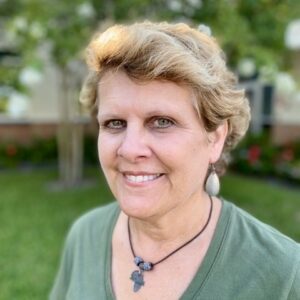 by Dana Welty
by Dana Welty
 What must I do? Scroll or Toil?
What must I do? Scroll or Toil?
As a communication major, we had a beloved professor who emphasized, “Communication occurs when a message is not only sent, but received.” In a world where communication has changed dramatically due to technology, how do we make sure our church messages are sent to varying demographics and then received in order for them to be engaged? Do your members scroll to find info or do they have to toil to get what they need?
Twenty-five years ago, I was called upon to lead a teenage cleaning crew at camp. I emailed them. The next summer, no one read emails-I had to send Facebook messages. The next communication channel was text. As soon as one line of communication became effective, I had to find another route. Things changed and still change so fast.
Obviously, the verbal announcements often paired with your church’s regular communication channels, will be the first efforts when it comes to pushing information out to the church. At our church, our 80 and 90 year old friends have diligently learned how to log in and keep up with church emails. Many of them are keeping up with their families spread throughout the world on social media platforms that never existed when they were younger. So how can we utilize all of these options best?
I often laugh and think, these letters that we have that are combined and known as the Bible, are a compilation of communication between people. We consider them the word of God, which is true, but we are getting an inside view to their rulebooks, their poetry books, and their letters. And these mere words have drawn people in to the best story for years.
Back in the early 90’s when youth group drama groups were popular, my husband and I began to volunteer with our teens. I had been a part of a lot of theater performances and I was very frustrated with the quality of the work. Kids were late, some wouldn’t give it their all; I was frustrated. When I went to our youth minister, frustrated, he said, “Dana-I’m not THAT interested in how well they do, I want you to build relationships with these kids.” That was a moment for me.
Your digital presence as a community of believers should have a rhythm of informing, documenting and encouraging all based on the foundation of striving to build relationships.
Informing and Promoting
For the protection of children, often church children’s ministries create private groups and for good reason. Children in foster care or who have been adopted do not need to be in photographs online. But the knowledge of events throughout the demographics of the church often prompt volunteering that only comes due to the promotion of the event-just the info being out there. People have approached me about volunteering that I never would have asked but because the info was out there, they asked me. If you post it, they will come.
Document by Sharing the Love
After the event, documenting and posting pictures is like inviting others to a family reunion. “Let me show you our church game night, our teen’s mission trip, or our ladies’ lunch at Cheddar’s.” A common cultural acronym today is FOMO (fear of missing out). When you post pics of an event, you’re actually creating what I like to call FOMOOR (fear of missing out on relationships). The pictures are powerful because they show the smiling faces and that it’s fun to gather, for whatever reason, service, celebration – true community. In reality, we aren’t trying to promote FEAR of anything. Our efforts aim to translate community through pictures, “Taste and see that the Lord is good,” Psalm 34:8 Yes, we are on our phones a lot-but often when we see pics, we shout, almost like Buddy the Elf, “I KNOW HIM!” People can see members of their church family, or chamily, as I like to call it, choosing to be together. Buddy was in a different world but he recognized someone he had a connection with, became excited, and he shared it…Buddy’s good news.
Encourage one another
Lastly, our digital platforms can be a source of encouragement. Most of the time, when we are scrolling, we are in a less urgent state of mind. We are processing what’s happening in the world. Looking for information in emails often feels like work, less visual documentation, heavy on the information. Rarely, does a church send an email with a Toby Mac quote as it’s only bit of information. Who doesn’t need to hear, “Sometimes you need a STOP DOING list as bad as you need a TO DO list,” Tobymac #speaklife, Often, those scrolls are happening when we are trying to decompress, run away, or find some bit of hope in the world. Those scrolls don’t need a church name next to a quote with severe judgment or these will evoke “unfollows.” We want our social media to prompt “Follow me…and I will make you fishers of men and you’ll be a part of a community where there’s hope.”
Our digital presence as the people of God should be infiltrated with the desire to go into all the world and make disciples, build those relationships into something that others will see online and want to be a part of and eventually grow the family of God. May God give us the wisdom and excellence to use our digital spaces to bring more believers into our physical spaces.
About the Author
Dana Welty is a seasoned educator and currently teaches Kindergarten in St. Petersburg, Florida. She spends her days being the Pied Piper, leading her students to the amazing things in the world that God has created and transformed while building a strong academic foundation for their transformation as well. She has been a part of a minister’s family throughout childhood and by marriage. Dana earned her B.A. in communication with an emphasis in theatre, and her Master’s degree in education from Freed-Hardeman University.

Leave a Reply